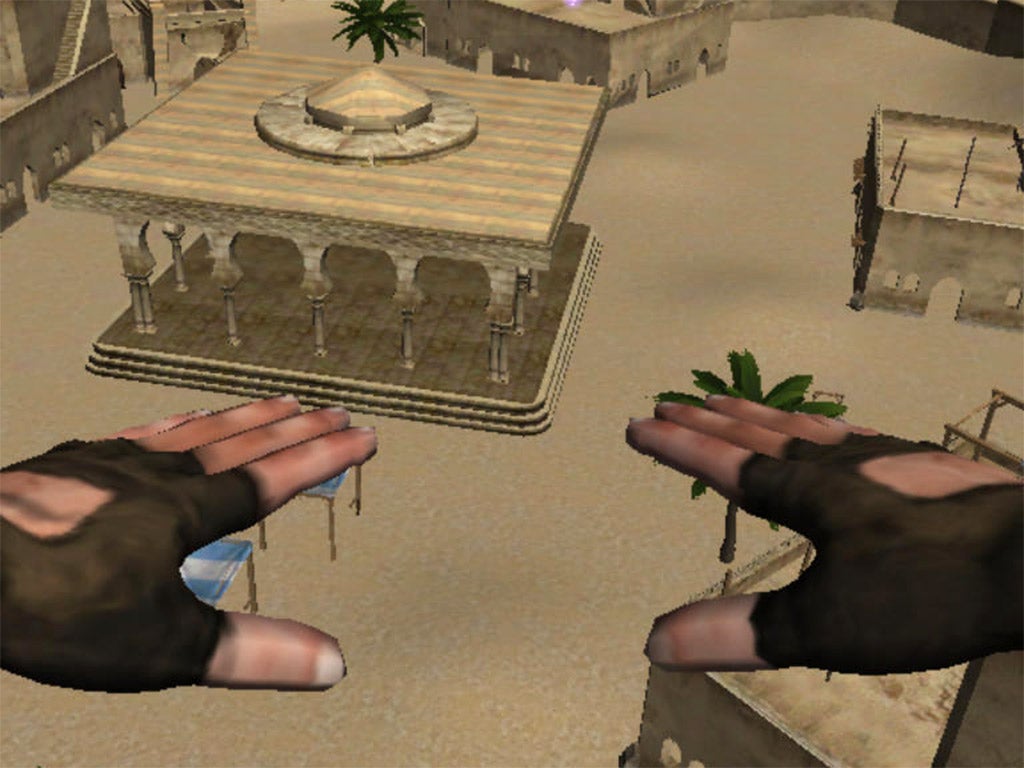Motion tracking at eyeball level looks set to be a big game-changer in 2015
A forthcoming version of Assassin's Creed will come with an eye-tracking add-on, while Umoove Experience uses eye tracking to control flight simulation

Your support helps us to tell the story
This election is still a dead heat, according to most polls. In a fight with such wafer-thin margins, we need reporters on the ground talking to the people Trump and Harris are courting. Your support allows us to keep sending journalists to the story.
The Independent is trusted by 27 million Americans from across the entire political spectrum every month. Unlike many other quality news outlets, we choose not to lock you out of our reporting and analysis with paywalls. But quality journalism must still be paid for.
Help us keep bring these critical stories to light. Your support makes all the difference.
Up until last weekend, my air drumming made no sound. Whenever I decided to thwack an imaginary cymbal at the climax of Queen's "Bohemian Rhapsody", I was merely emulating drummer Roger Taylor for my own private enjoyment.
But that's all changed. A Sony Playstation Eye camera (£5) and a new bit of software called Aerodrums (£130) has granted me a wish that I've had since I was a teenager: an invisible drum kit that not only works, but actually captures nuance and subtlety, thanks to clever motion tracking, two reflective drumsticks and two reflective pads for the feet. It's given me my first technological jaw-drop moment of the year and given my neighbours their first opportunity of the year to bang on the wall to get me to shut up.
Most people's first experience of motion tracking is through gaming (Nintendo's Wii, Microsoft's Kinect or the aforementioned Playstation) and it tends to have a powerful impact, as you ponder this new era of cause and effect: if you wave your arm like this, then that happens. But fast-improving technology and more accurate tracking methods will continue to make us sit up and raise our eyebrows, as Aerodrums has proved. It's motion tracking at eyeball level, however, that looks set to be a big game-changer (literally) during 2015. We can already see a simple version of this kind of tech in Samsung's Galaxy S4 phone, where screen content moves according to the tilt of your head. But it's getting smarter all the time. Pizza Hut trialled a digital menu back in December, where toppings were added to your pizza order depending on how long you spent looking at them. That's evidently a system fraught with problems ("No! I don't want mushrooms, I was just looking at them, OK?") but it was a diverting idea.
Apple has just been granted a patent (originally filed in 2012) for a particular kind of eye-movement control for stuff on screen, and that's prompted muttering about the prospect of a camera-controlled living room – but again, it's going to be gaming that drives this.
A forthcoming version of Assassin's Creed will come with an eye-tracking add-on, where the action centres around your point of vision, and looking away from the screen will bring the game to a pause. (NB: you'll need to buy a particular eye-tracking peripheral costing £130 to use it.) Another game, Umoove Experience, has just arrived in the App Store for iOS devices and also uses eye tracking, this time to control flight simulation. It's free to download and represents a tentative proof of concept; we're going to be seeing it used in many other games, but Umoove is also striking up partnerships with marketing departments. After all, eye-tracking tech is the perfect way to know what we're looking at.
The London creative agency 18 Feet & Rising has just launched a website to promote the Skoda Fabia – www.fightforattention.com – and it's a perfect illustration of how this technology can be deployed to detect our preferences. The site calibrates your eye movement to on-screen movement, before showing you an advert featuring blue and white versions of the car. At the end it gives you detailed information about the way your gaze shifted and, most significantly, tells you which car you spent most time looking at. Little wonder that companies like Amazon are now venturing into this area; who needs clicks to establish our interests, when our facial tics might give it away?
Join our commenting forum
Join thought-provoking conversations, follow other Independent readers and see their replies
Comments